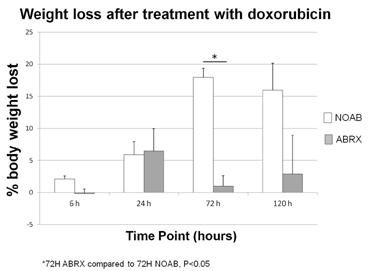|
|
Back to 2015 Annual Meeting Program Depletion of Enteric Microbiota Protects from Chemotherapy-induced Damage in the Murine Small Intestine Jacquelyn Carr*, Stephanie L. King, Christopher M. Dekaney Surgery, UNC, Chapel Hill, North Carolina
Introduction: Enteritis is a significant side effect of chemotherapy, and is a potential dose-limiting complication. Pharmacotherapy can diminish symptoms, but there are no effective treatments to prevent the intestinal epithelial injury responsible for enteritis. While the intestinal epithelium can repair and regenerate, the mechanisms guiding epithelial damage and repair are unknown. Our preliminary studies suggest that enteric bacteria play a critical role in precipitating mucosal damage after treatment with doxorubicin (Dox), a common chemotherapeutic drug. Following Dox, mice raised in germ free conditions do not show the small intestine crypt loss, increased crypt depth, or alterations in proliferation demonstrated in conventionally raised mice. In the germ free model, the mice have never been exposed to bacteria, which naturally alters their enteric flora. Since the enteric bacterial environment is crucial for homeostasis, this complete lack of exposure to bacteria likely alters intestinal signaling not only at baseline, but also in response to damage. In the current study, we thus employ a model to eliminate enteric bacteria in adult mice in order to more fully elucidate the role of bacterial signaling in moderating small intestinal damage to Dox. Back to 2015 Annual Meeting Program |
|||||||||
© 2025 Society for Surgery of the Alimentary Tract. All Rights Reserved. Read the Privacy Policy.


